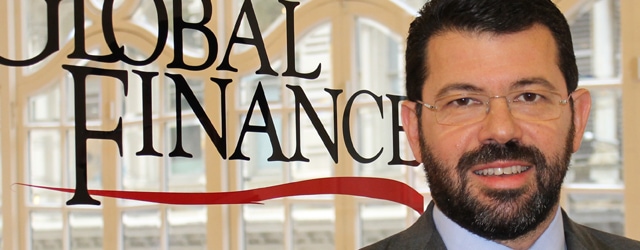Paolo Sironi, a global thought leader in wealth management and investment analytics with IBM and the author of FinTech Innovation: From Robo-Advisors to Goal Based Investing and Gamification, visited Global Finance to talk about robots, algorithms and making personal finance more like a game.

Global Finance: What problem do robot financial advisers solve?
Paolo Sironi: Most individuals are not good investors. The typical investor underperforms relevant indexes, even before you include fees and transaction costs. Individuals tend to buy at market highs and sell at the lows, and they tend to act without thinking strategically about their long-term goals, whether that is retirement or college funding for the kids. You need to start from the goals of the person, the goals projected over the lifetime of that person, and move away from expected returns, because you can’t predict returns.
GF: Why is this changing now?
Sironi: Technology changes things. I’m 45 years old. My father bought a CD player when I was young. We added an equalizer and loudspeakers, we bought fiber-optic cables, the whole setup. There was nothing else for me to buy. Then Steve Jobs came along with the iPod. It changed the world. But you know what? You don’t find iPods in Apple stores today; the world changed again.
The same thing is happening in finance. In the past, only the wealthy could afford financial advisory, and it was all highly personalized. In the robo-advisory market that is now developing, you have the opportunity to reach a new swath of investors who were not accessible in the earlier paradigm. But you have to tier it around their individual needs.
GF: What’s the role of government in this trend?
Sironi: The engine for innovation today is regulation. Without regulation, the banks don’t have incentive to change their relationships with customers. If you are a bank, you may have mortgages, you may have loans, but with zero interest rates, there is no margin coming out of those loans. The global financial crisis squeezed the cost of transactions, but it didn’t change banks’ relationships with their customers. We need to change from banks being a distribution channel for products towards a distribution channel for advice.
GF: How do you apply game theory to robo-advisory?
Sironi: This is more art than science at this point. You need to create an engagement mechanism, a level of stickiness to cause the client to want to engage with you. Think about an airplane flight simulator. If you lose, you want to play again. Now imagine your portfolio. You start playing with it. You can stress-test yourself. All these elements need to be related in a holistic approach, not centered on products but on the customer. You need something that maps the way individuals think, to help individuals make decisions more intuitively with analytics behind them. Gamification provides individuals a way to learn more without going back to school.



